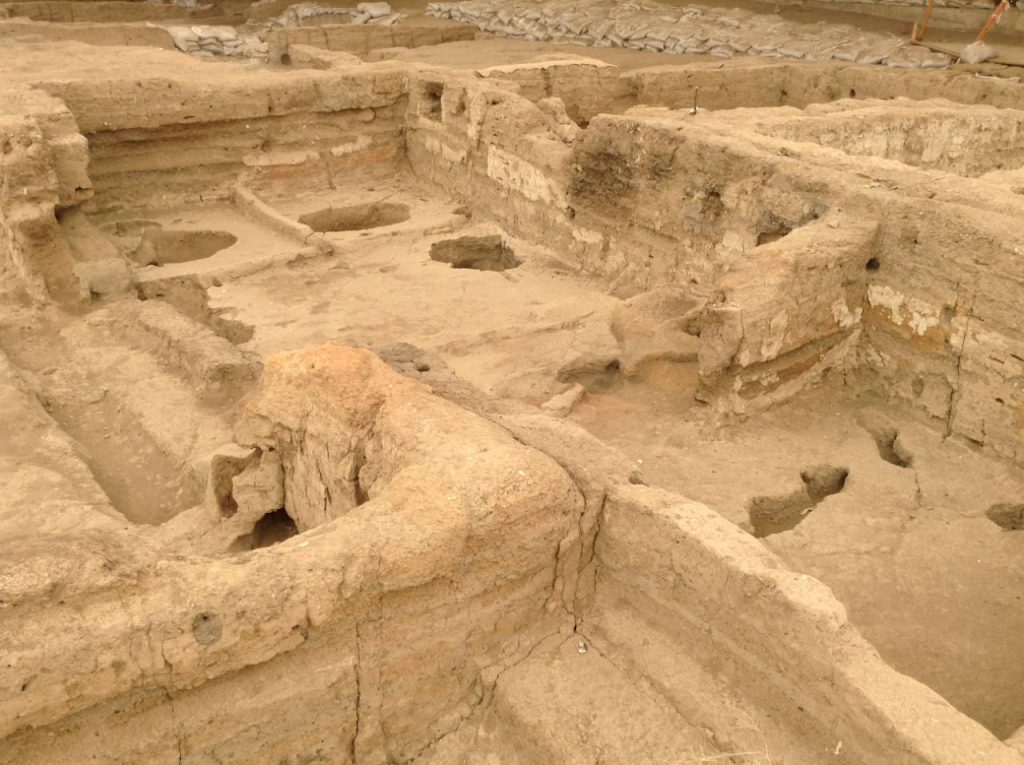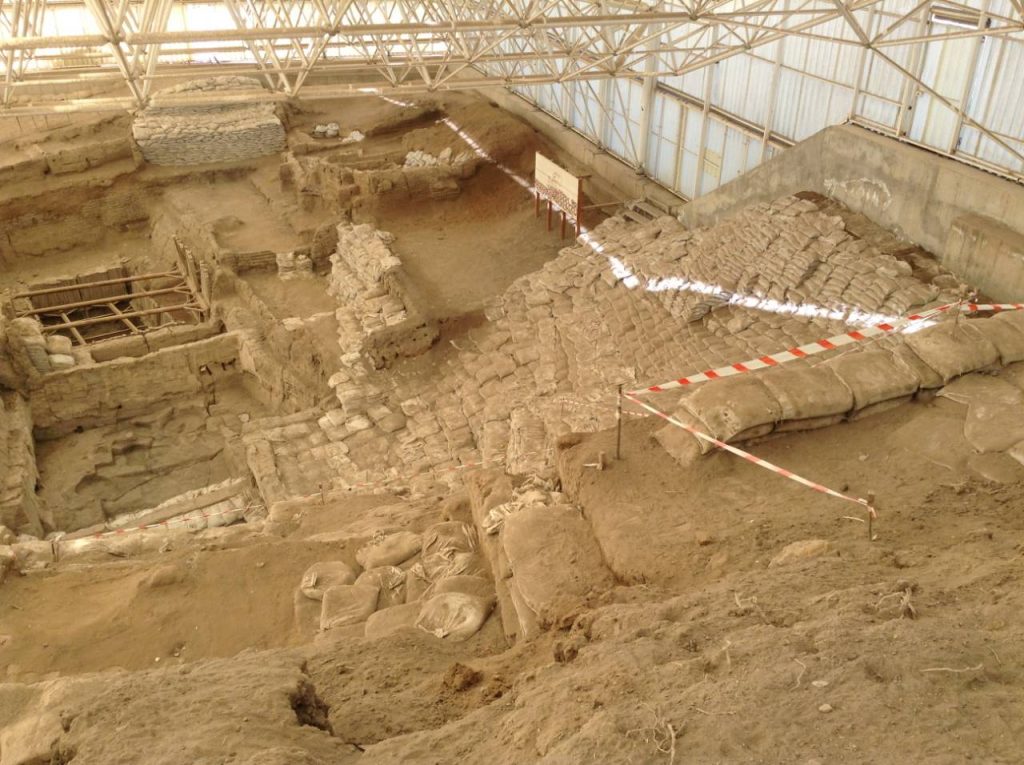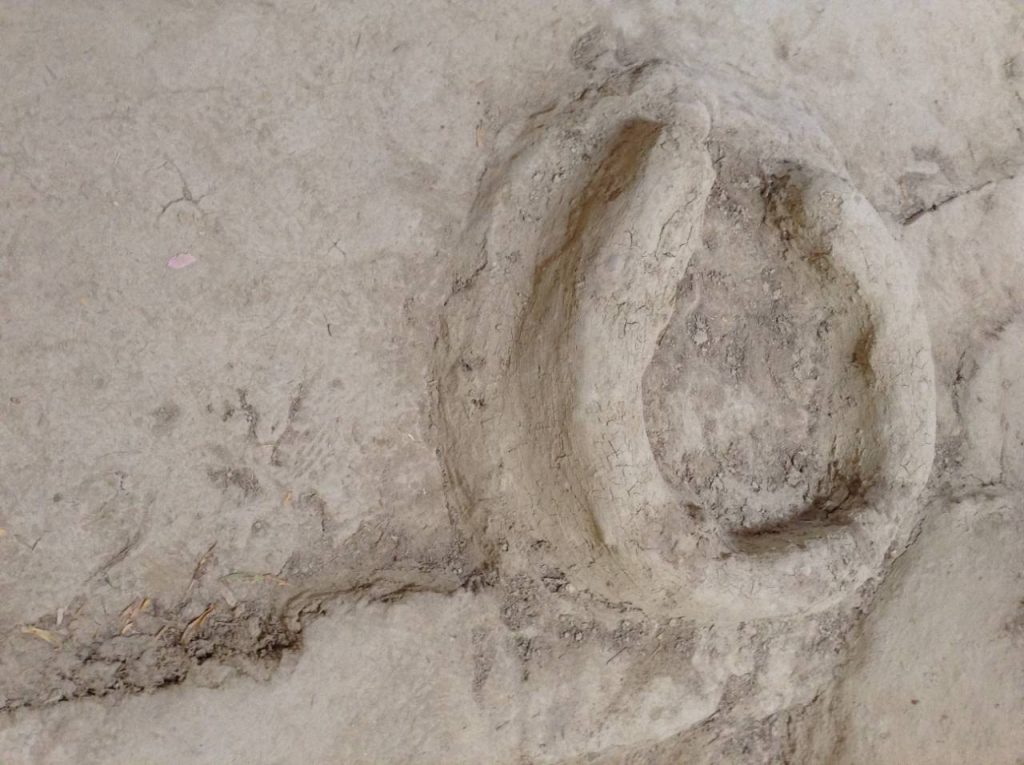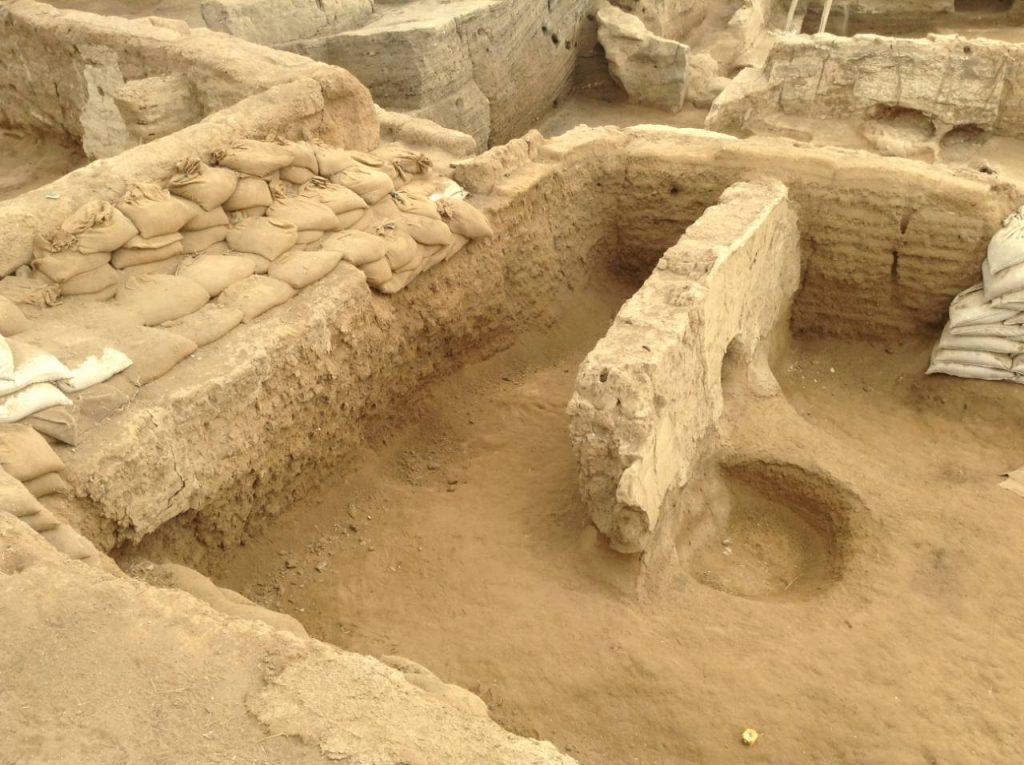Sometimes it’s the unseen that is the most fascinating. The imagination can drift back to a time far before we existed to wonder about an archaic civilization that survived off the land and respected nature. Çatal Höyük is a Neolithic settlement that is rooted in deep time and was unearthed in the heart of a plain near present-day Konya. Seçkin and I were stoked to travel back thousands of years in one afternoon, but we were almost out of gas. We tried not to panic as we coasted into Kuçükköy (Little Village) close to our destination, but didn’t see anyone in sight. It felt like the place was abandoned, not even any kids were running around and the only two gas stations where we did see signs of life, were fresh out of gas. It looked like it was nothing but tumbleweeds for us. Would we make it to Çatal Höyük? We were so close…

We did make it, thanks to a Turkish miracle. We met a passerby who told us to follow him and he would take us to the closest gas station, but he sped off in a frenzy making it impossible for us to keep up then he disappeared into the horizon. Lucky for us, we did manage to find gas and continue on our journey. We parked near a family of birch trees that lined a small stream and followed a dusty path to the shelter that preserved the primeval site. Çatal Höyük is located in the middle of a plain with the inactive Hasan Dağı (Mount Hasan) in the distance and is surrounded by fertile agricultural fields. The archaeological site is composed of several layers and levels of dirt, dust and bones all suspended in time. Traces of humanity from 9,000 years ago are now visible and have been awakened after centuries of slumber deep within the earth. We can now witness an incredible chapter in human history largely thanks to the intensive labor, research and dedication of teams of archaeologists and locals. Being this physically close to a Neolithic settlement was difficult to grasp. This is the very place where archaeologist James Mellaart discovered the infamous female statuette, “The Seated Woman of Çatal Höyuk” that dates back to 6000 B.C. She is thought to be a Mother goddess once worshiped by the people of Çatal Höyuk. The voluptuous figure sits on a throne with two animal arm rests. Currently, this statuette is displayed at the Museum of Anatolian Civilizations in Ankara (by the way, this museum is beyond amazing). I reminisced about the time when I had first seen her under the protective glass at the museum and how I tried to imagine the place from which she came. Now, here I was, in her native land, where prehistoric rituals once prevailed.

The excavated site is mind-blowing; it reveals layer after layer of ancient dwellings that are all interconnected in a sort of jagged patchwork that extends across the landscape. The entire site is protected under a sheltered dome that lets natural light pass through and creates a breathing space in contrast to the congested architecture it shields below. We entered on the highest, elevated level that slowly sloped down. It’s prohibited to walk around in the actual interior spaces, but we could get a feel for just how intimate they were. All of the quarters were so clean, likely from being meticulously hand brushed over a slow and careful excavation process. I didn’t hesitate to get down on my knees to peer as close as I could get; I stared hard and observed the details in the exposed layers. I was hopeful that I might find an overlooked fragment still in situ. However, I had no such luck, but I kept on anyway. I fantasized what it must be like to come here every day to scour the dirt in search of missing puzzle pieces or uncover a completely new and mysterious artifact. The moment of discovery must be absolutely thrilling. Soon, another veil of time will be lifted and more questions may be answered.

There were sandbags stacked everywhere; against mud brick walls and interior structures possibly to keep out any chance of rainwater sneaking in. Some of the walls had already begun to recede in an invisible slow motion. In Çatal Höyük, houses were built closely together and there were no streets in between so people entered through the roof. Wooden ladders were the way in and out. The homes were mostly rectangular and included a main room with an oven space for cooking that was located under the ladder and a small side room was used for storage. People slept on raised platforms and the dead were buried beneath the floor. Talk about a close-knit family! The walls were made of mud bricks, then plastered and painted. Murals and paintings were the veins that pulsed throughout the settlement and provided us with historical narratives either real or imagined. Panthers, vultures, birds and bulls were depicted on walls throughout Çatal Höyük. Some of the visuals had geometric designs or patterns that spoke a language without words. The artworks were done with a natural, red pigment made from a mix of hematite and clay found in the region. All throughout the settlement’s history, houses were reused, often burnt and rebuilt over another.

The museum on site is small, but it provides a comprehensive overview of historical information and at the time of our visit, there was an interesting exhibition of photographs with text about the excavations that have happened over the years and involved the local community. One very interesting fact we learned was the first known mirrors were discovered here fashioned from a black obsidian stone (volcanic rock) that was cut into a semi-hemispherical shape, then polished thus allowing one to see their reflection. Obsidian was also used to made tools such as blades and arrows. Seçkin and I had fun playing around in a recreated höyük house, but, unfortunately, it didn’t permit us to enter through the roof.
Although Çatal Höyuk is not a flashy archaeological site, it definitely has an authentic, primitive charm with a profound sense of mystery. Go experience these fossilized ruins steeped with human history to see what ignites your imagination.
Images courtesy of the author.









